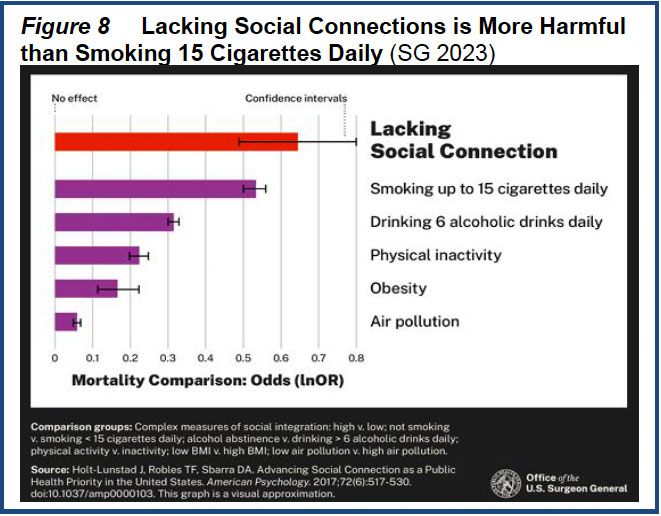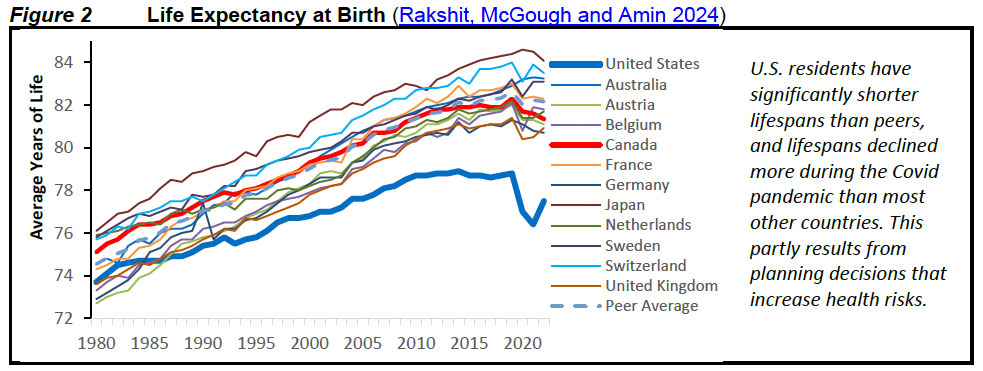
Health and planning for quality of life
“Quality of life” is an elusive concept that people want in their communities but is often undervalued by planners because it is difficult to measure. However, there are clear ways that planners can boost quality of life, adding years to people’s lives and improving happiness, argues Todd Litman of the Victoria Transport Policy Institute, who recently issued a report, Planning for Quality of Life: Considering Community Cohesion and Related Social Goals.
Quality of life is related to social factors like community cohesiveness, equity and affordability, fitness and health, personal security, and attractiveness of the public realm, Litman explains. Perhaps the most striking quality-of-life factor is cohesiveness, which Litman defines as “The quality of interactions among people in an area, and therefore the strength of connections among them, indicated by the portion of residents who know, trust, enjoy and spend time with their neighbors.”
A powerful planning argument for walkable communities can be made relative to cohesiveness, backed up by research. “Compared with car-dependent areas, people living in walkable areas are 24-47 percent more likely to have a strong sense of community,” according to one study, (Frank et al), among many. Walkable places increase social capital (Leyden, 2023) and result in far more friendly, unplanned encounters, contributing to mental health. If you walk to a destination, you are twice as likely to have a friendly encounter than if you drive, and 50 percent more likely than if you take transit, reports Litman.
Why does that matter? It turns out loneliness increases the odds of dying sooner to an astounding degree. Not only does lack of social connection carry a similar risk to smoking 15 cigarettes a day, but it is also twice as risky as consuming six alcoholic beverages a day, reported the Surgeon General. Furthermore, being lonely carries twice the risk of being physically inactive, which in itself is a substantial risk. Obesity is also a big risk, and that is also connected to physical activity and walkability—although other factors like diet have an impact.

While community planning cannot address smoking and drinking, walkable places have a salutary effect on both loneliness and physical activity. Walkability and park access are strongly associated with better outcomes in physical activity, obesity, diabetes, heart disease, stress, and a sense of community (Frank et al., 2019). That is because physical activity rises, easily measured by the step count on a cell phone, in a walkable place without people having to think about it. It is built into everyday life. While staying in an exceedingly walkable place—like downtown Savannah, Georgia, or Seaside, Florida—I've noticed that my step count invariably doubles or triples.
Other aspects of this report are important, especially affordability and equity, because walkable places can get expensive. While they remain in short supply, the National Association of Realtors reports that a solid majority (56 percent) of Americans prefer a small lot in a walkable place to a large lot in an automobile-dependent place. Litman explains that high real estate prices can be mitigated by reducing transportation costs in a mixed-use community, allowing for higher density and missing middle housing, and subsidizing affordable housing built in walkable neighborhoods.
Another factor is security and protection. Substantial crime damages quality of life to the degree that residents will move to a safer neighborhood. Research shows that crime rates tend to decline with passive surveillance provided by pedestrians, businesses, and homes with windows that face a street, called “eyes on the street,” Litman explains.
The final factor, public realm beauty, is the province of urban designers and architects, and can certainly be enhanced by good planning and landscape features.
Of all of the highly developed nations, the US has the lowest life expectancy by a substantial margin:

The US also has the most suburban sprawl. According to Litman, sprawling communities tend to:
- Drive 30-70 percent more and use active modes (walking, cycling) 70-90 percent less.
- Have 20 percent to 80 percent higher traffic casualty rates.
- Be less physically active, have higher heart disease and diabetes rates, and die two to four years younger, all else equal.
The problem is that we over-invest in the following:
- Higher speed modes and roadway expansions.
- Urban-fringe development.
- Parking subsidies and mandates.
We under-invest in the following:
- Slower but affordable, inclusive and safer modes of transportation.
- Compact and mixed community development.
- Public realm improvements.
Clearly, America has a big public health problem, and research powerfully connects that issue with how we plan and build communities—and the dominant mode of development since 1950, suburban sprawl. Compact, walkable communities play an important role in boosting the health and social connections of Americans. It is high time that we started taking quality of life more seriously in planning.




